Updated (04/04/2016)
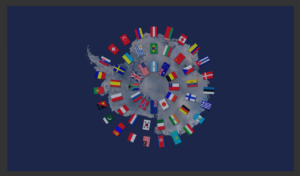
Antarctica World Park, the only one of it’s kind. A place where 52 countries have come together to sign an agreement that will last until 2048. In a message of hope and peace, Antarctica symbolises what can be done when people agree and co-operate together.
Who Owns Antarctica?
In 1908 there were seven competing countries claiming parts of Antarctica for themselves, and with all disputes over territory this escalated through to the 1940s and 1950s. By the time 1955 came around there were 20 bases on Antarctica and it was shaping up to be the defining moment of the cold war. (pun and historically accurate!)
However, the nations involved took another look and realised that this would be the moment we would decimate the human race or we could work together to resolve the Antarctic dispute. So in Washington on 1 December 1959 the Arctic Treaty was signed by 12 nations, bringing into effect a whole continent given over to humanity for scientific and that it would only be used for peaceful purposes. The Arctic Treaty came into force on 23 June 1961. (Arctic Treaty – Full Version here)
The Arctic Treaty suspended any further territorial claims, that it would be a demilitarized zone and be promoted as an international scientific community. There is no government as other countries have, no permanent inhabitants and any products taken to Antarctica must also be removed from Antarctica.
In 1991 the Arctic Treaty was again discussed and agreed with 24 nations that would ban all oil and mineral exploration for the next 50 years and that Treaty came into force from 1998 and will be enforced until a new agreement is made or until 2048. To date there are 52 countries signed up to the agreement and governance for Antarctica is carried out yearly at an annual “Antarctic Treaty Consultative Meeting”.
The meeting take place in different countries each year and normally last for 10 days. For any major decisions resulting in consequences affecting Antarctica the main 29 consultative Nations must agree for anything to change.

Antarctica – The Place, The Climate, The Altitude
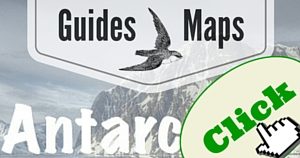 Antarctica is the fifth largest continent on Earth and has an area of 1 382 943 000 ha (13 829 430 sq. km). That is 58x larger than the United Kingdom! A large majority of Antarctica is ice and Glacier which is deposited in the form of rain and snow. This compacts to form large ice sheets which, under their own weight, slide down to the sea. Here they enter the ocean and then break off and float away or get lodge on another piece of land and melt. The largest piece of ice to break and float away was the size of Jamaica (B15A). See an ice breaker ship moving through the ice here.
Antarctica is the fifth largest continent on Earth and has an area of 1 382 943 000 ha (13 829 430 sq. km). That is 58x larger than the United Kingdom! A large majority of Antarctica is ice and Glacier which is deposited in the form of rain and snow. This compacts to form large ice sheets which, under their own weight, slide down to the sea. Here they enter the ocean and then break off and float away or get lodge on another piece of land and melt. The largest piece of ice to break and float away was the size of Jamaica (B15A). See an ice breaker ship moving through the ice here.
The Place
To get a better idea of what is below the ice, watch the short clip from imaging planes that are mapping Antarctica through the ice sheet. Antarctica is considered a desert and even though nearly 70% of all Earth’s Fresh water is locked within glaciers and ice caps, this continent has no trees or plants which grow on it’s surface. There is moss and algae which cling to the ground, and as was recently found by drilling through 800m of ice, fresh water glacial lakes hold millions of bacteria.
Isolated from the sun, and trapped below a thick sheet of ice, these glacial lakes form because of the warms of the Earth’s core forming their own small micro system. You can read an article here of the scientists who recently discovered what was inside a small sample of this fresh glacial water.
The scientists and drillers involved hold Antarctica in such high regard as a World Park that to be sure they were not contaminating the underground lake they ensured all equipment was sterile and using ultraviolet light and hydrogen peroxide along with a water purification system, they were able to drill down to these lakes below.
The Climate
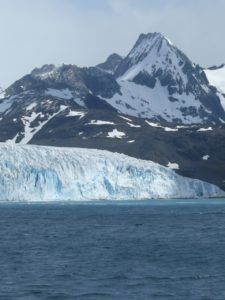 As one might expect, Antarctica is cold! The average summer temperature is a cool -27.5°C and in the only other season of the year in Antarctica, in winter, the average temperature is -60°C. To give you an idea of these temperatures, if you throw hot water in the air it turn to crystals of ice before it reaches the end of your throw! (Here is Chris demonstrating it in Russia at -41°C) The air is so clod that you need to wear a mask over your face and a mouth to stop your eyes from freezing and your lungs from getting frost bite!
As one might expect, Antarctica is cold! The average summer temperature is a cool -27.5°C and in the only other season of the year in Antarctica, in winter, the average temperature is -60°C. To give you an idea of these temperatures, if you throw hot water in the air it turn to crystals of ice before it reaches the end of your throw! (Here is Chris demonstrating it in Russia at -41°C) The air is so clod that you need to wear a mask over your face and a mouth to stop your eyes from freezing and your lungs from getting frost bite!
The other factor affecting the climate in Antarctica is the wind. Here, the wind has been recorded to gust up to a record of 248.4 km/h. That will blow anybodies hat right off, I’m sure! As these high winds blow across the continent, they shape and mould the ice in its paths too creating funnels which blast across the surface. They force their way into the smallest of cracks creating snow drifts and fill rooms.
Finally the other climatic feature is that the Earth is tilted on it’s axis. If you imagine a ball with a pole straight through the middle of it, that is similar to the earth, except you need to tilt the pole in the ball now. As you can imagine the bottom of the ball will for half the year be in sunlight (constant day time) and during the winter, when the tilt faces away from the sun, there is constant darkness/night.
The Altitude
For a continent that you see mainly images from the water, it is surprising to think that it holds the record for the highest average altitude anywhere on earth. At an average of 1 860m, Antarctica again adds to this hostile environment by being elevated into the even colder air. It is equally surprising then that for a place that is so white and seems to experience so much violent weather, that the average snow fall per year around 10cm, and precipitation is very low due to the freezing conditions.
The ice is built up over many years to create thick sheets which sit on the land up to an average of 1 829m. Of course snow fall varies from east to west and the average is taken over the whole continent. The interior of which receive very little, but the East side receive as much as 1.2m in a 48 hour period.
Life in Antarctica World Park
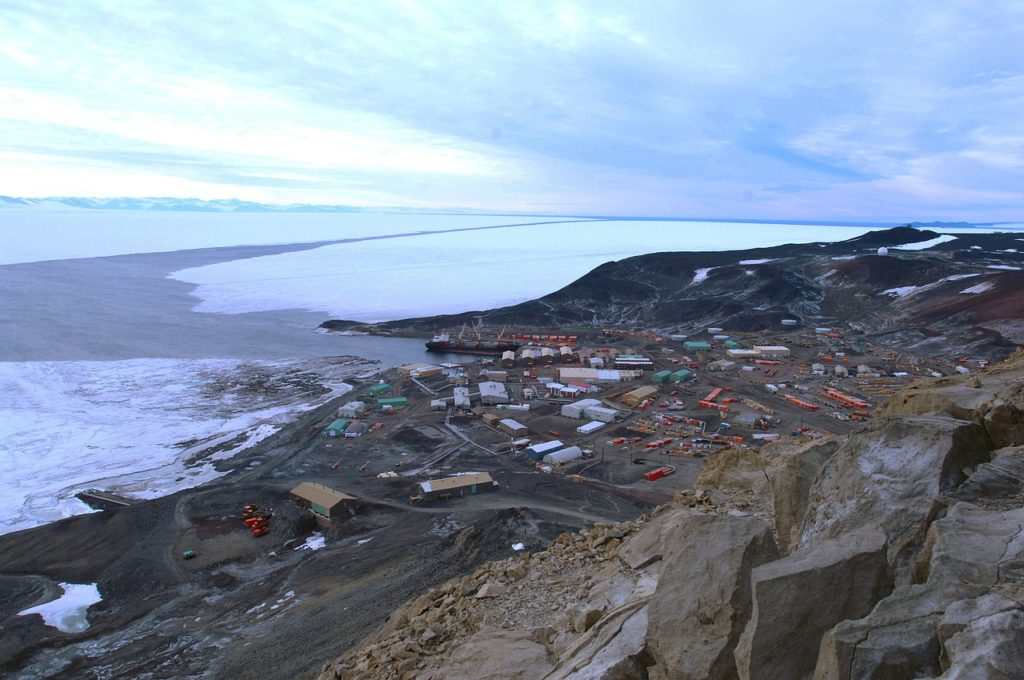
Humans cannot exist here unaided by technology. We could not stand the cold for very long and there is very little way to create shelter and warmth. The air temperature alone will cause hypothermia in the human body without proper protection within a few minutes. The shelters are there for the protection of people visiting and for the people who live here for the summer months. There is no permanent resident on Antarctica.
During the summer months tourists can visit the Continent and will have tours around the ice. It is a long and expensive journey and yet, from every video or report read, the one point that stands out is the remote wilderness experience still relatively untouched by humanity.
Some figures relating to Antarctica’s population are that during the summer there are probably around 4000 people related to scientific studies who live there, and during the winter there are around 1000. There is a swell of tourists visiting in the summer months too, ranging from 30 000 to 40 000. It may seem a big number but in a place that is 1.8x bigger than Australia, whose population is 23.13 million, it is very small indeed!
Biodiversity in Antarctica World Park
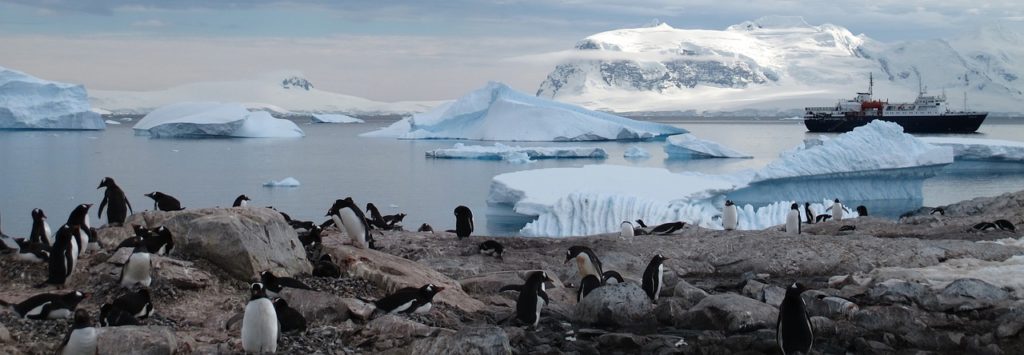
Even though Antarctic is a desert, it still manages to support a rich abundance of life. It is fragile though, and any major intervention here could cause havoc in an ecosystem so delicately placed. There are only 3 known nesting birds in Antarctica of which the Snow Petrel is one. The other two are the Antarctic/South Polar Skuas and the Blue Eyed (Imperial) Shag.
Of course the now famous Emperor Penguin breeds on the sea ice of the Antarctic and stand against the freezing cold temperature during the darkest months. There are other pengiums that visit here too, the Adelie Penguin, King Penguin, Chinstrap Penguin and Gentoo Penguin.
The main diet for these animals and birds rely on fish and krill in the sea waters surrounding Antarctic. Some of the larger visitors to the World Park are the Leopard Seal, Crabeater seal, Southern Elephant Seal, Southern Fur Seal, Weddell Seal and the giants of the sea, the Blue Whale, Orcas and Colossal Squids.
Fungi species grow in these extreme conditions too. Though there are no trees or shrubs, there are three types of grass that grow during the summer for a few weeks which also flower. Due to the poor soil and icy conditions it is near impossible for anything too large to exist in the cold darkness of the winter moths.
There are sea cucumbers and mudworms and even free-swimming snails found in and around Antarctica with far more life in the oceans than on the the icy peaks owning to the relative calm of the underwater realms.
Research Bases on Antarctica World Park
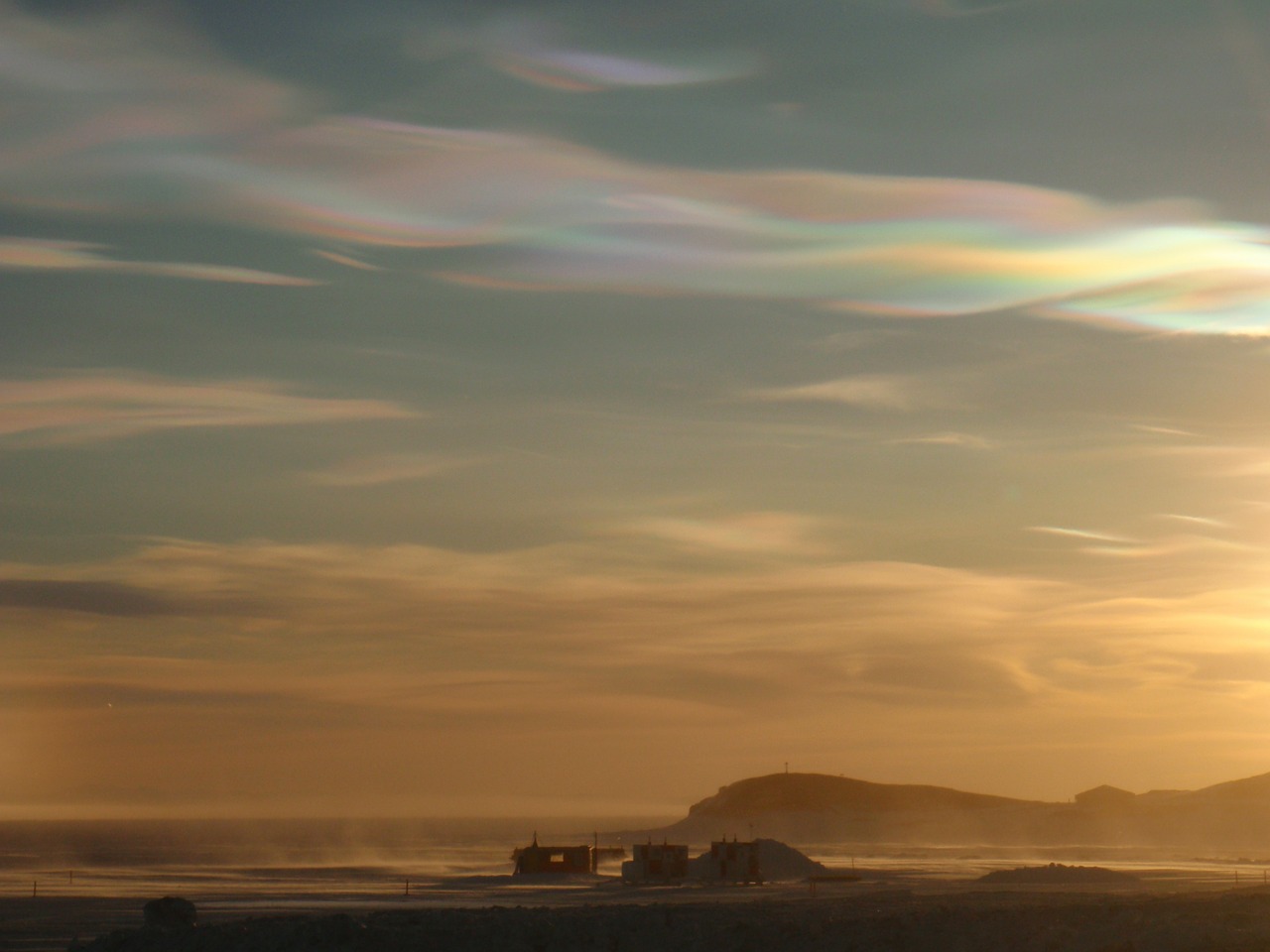
In the picture above you can see the Nacreous clouds or ‘mother-of-pearl’ clouds, there are aurora and there are skies so full of stars in the winter it is any wonder we may feel so along on or planet. However, the scientists and people who visit Antarctica in the Summer months are there to do research.
They arrive with clear experiments in mind and focus themselves for the entire time they are there. From Biologists, glaciologists and geologists to oceanographers, astronomers and meteorologists, they all converge to learn more about our planet and make discoveries about the way we affect our future. The study of the ozone layer and of course climate change is on the agenda, with the Belgium-based International Polar Foundation unveiling the first zero-emission polar science station in the Antarctica in September 2007.
Antarctica World Park is truly a place where countries come together to research and find solutions for all humanity. Scientists are proving this on a daily basis.
Greenpeace Involvement in Antarctic
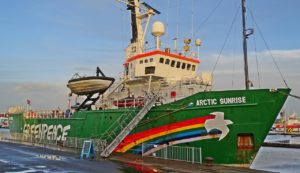 It would be inappropriate to not mention the involvement of Greenpeace in the creation of a World Park in Antarctica. The brave men and women who campaigned for the protection of Antarctica in 1985 still are in awe that they achieved more than just small scale protection, but a whole continent! What an achievement!
It would be inappropriate to not mention the involvement of Greenpeace in the creation of a World Park in Antarctica. The brave men and women who campaigned for the protection of Antarctica in 1985 still are in awe that they achieved more than just small scale protection, but a whole continent! What an achievement!
Greenpeace continued to maintain high involvement in Antarctica up until 1992. They set up a permanent base to “watch” over those bases that were there for research. The treaty that was made included that all waste must be removed from Antarctica. The importance of maintaining a presence is to maintain an awareness in the public mind that what we do in our own space and back gardens will affect the whole world globally. Greenpeace World Park Base was to be ignored while it was on Antarctica and given no assistance, yet they maintained a presence regardless.
The illegal fishing trade needs better monitoring, the stopping of whaling in the oceans near the Antarctic World Park needs greater protection and our own awareness of what we are doing to our planet, has been brought about by organisations like Greenpeace and individuals alert enough to realise we need change.
We cannot ignore what Greenpeace began and continues to do and our thanks must surely be granted to Greenpeace as much as it can be to the nations who signed the Antarctic Treaty declaring it a World Park for all of humanity.
Antarctica World Park
If we were recognising records, Antarctica is sweeping the board with them, however I am more interested in the World Park Status and to date, Antarctica World Park takes the records for the largest protected space on the globe. Wildlife, ecosystems, minerals and oil are all protected here and they are protected by 52 countries who have agreed to the Arctic Treaty. What a triumph and an example we can all work together!
Maurice
Videos and Playlist for Antarctic World Park
Gallery
NO GALLEY IMAGES YET! – Do you have some? See below how you can help!
If you have pictures you want to share with me so I can put them in the Gallery, please send them to me at ma*****@**************uy.com with “(PARK NAME) National Park Gallery Pictures” in the subject line please.
*I have tried to accurately represent facts and figures and give the best information possible listed above. If you should note that something is wrong please bring it to my attention with a link to where I can find factual evidence for the contrary. I take no responsibility for this information and offer it as information only. My email is ma*****@**************uy.com and title your email as “Correction: (PARK NAME) National Park” please.
Below find reviews for Antarctica World Park. Have you been? Tell us about it.
“Less than 2 minutes to leave a review!”
[rwp-review id=”0″]
Websites used for this article with much appreciation include:
http://www.coolantarctica.com/
https://en.wikipedia.org/wiki/Antarctica
http://www.greenpeace.org/australia/en/about/history/how-we-saved-antarctica/
http://www.nasa.gov/audience/forstudents/k-4/stories/nasa-knows/what-is-antarctica-k4.html
http://www.livescience.com/21677-antarctica-facts.html
http://7summits.com/vinson/vinson.htm
http://www.nature.com/news/lakes-under-the-ice-antarctica-s-secret-garden-1.15729
http://www.atoptics.co.uk/highsky/nacr1.htm

